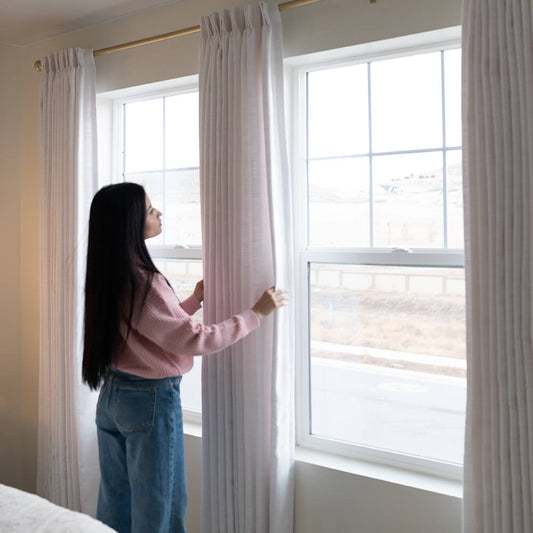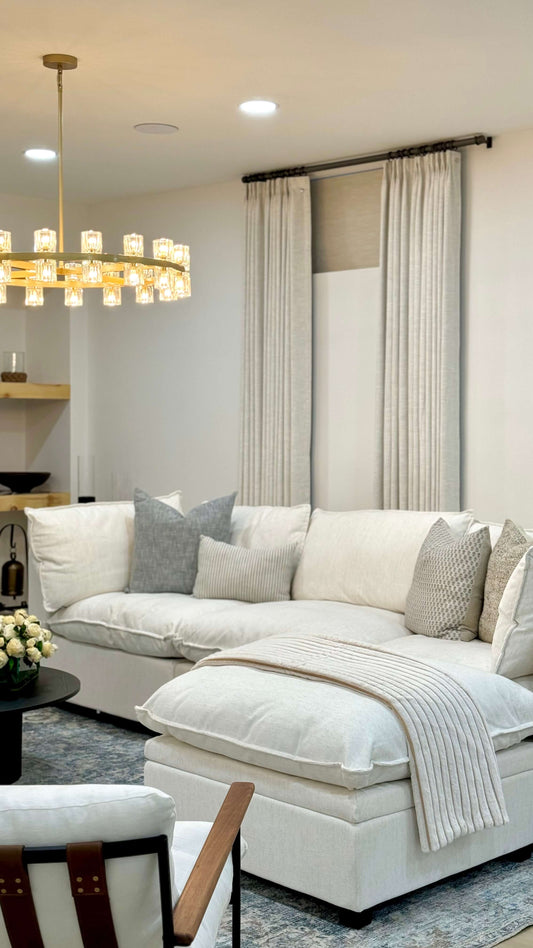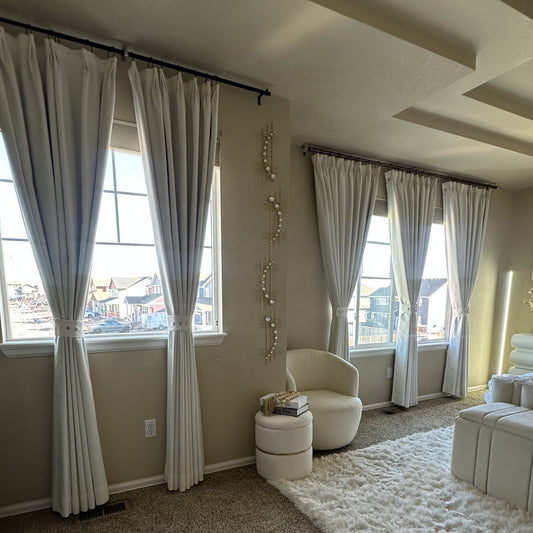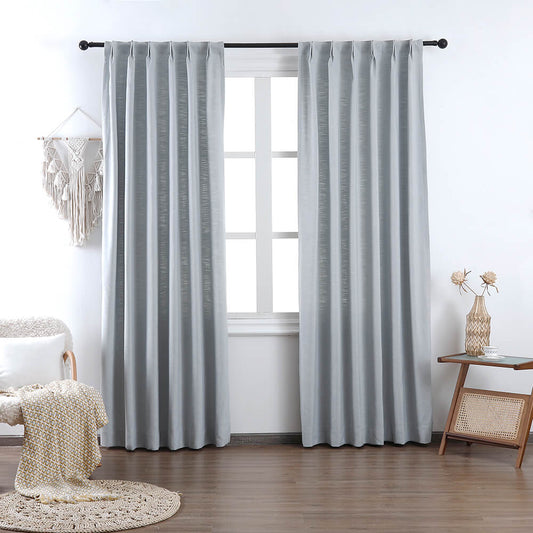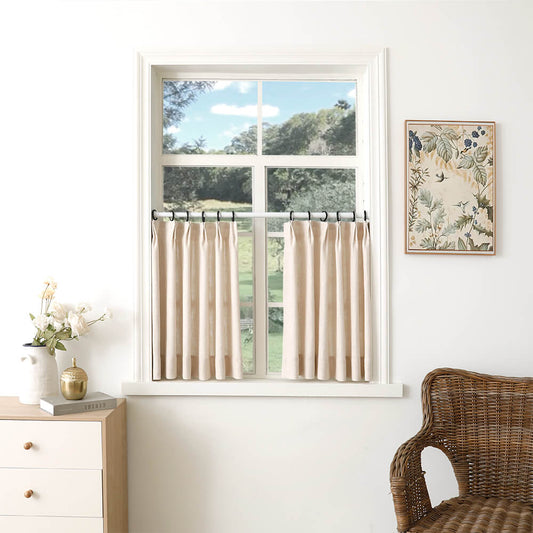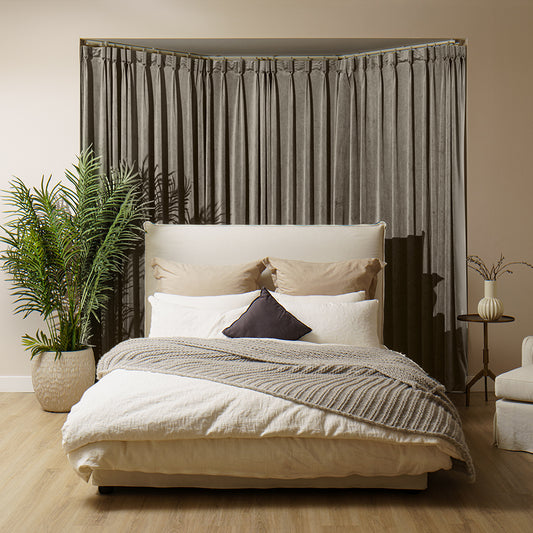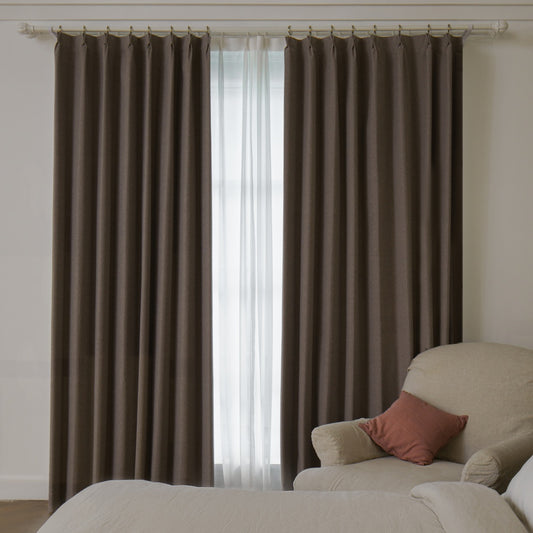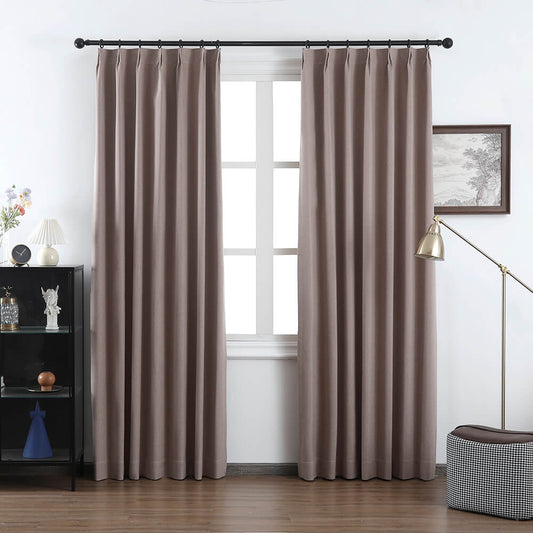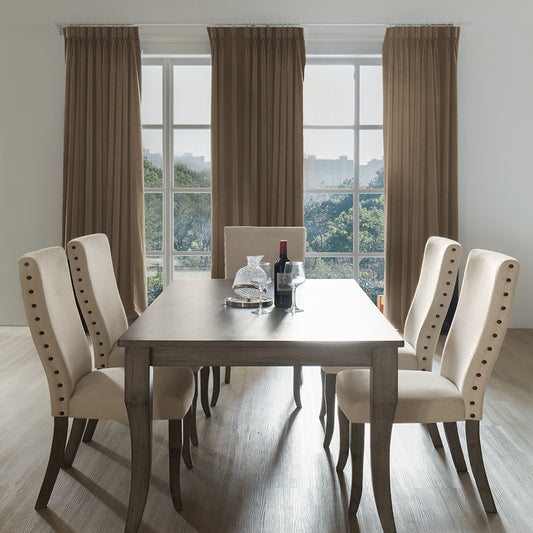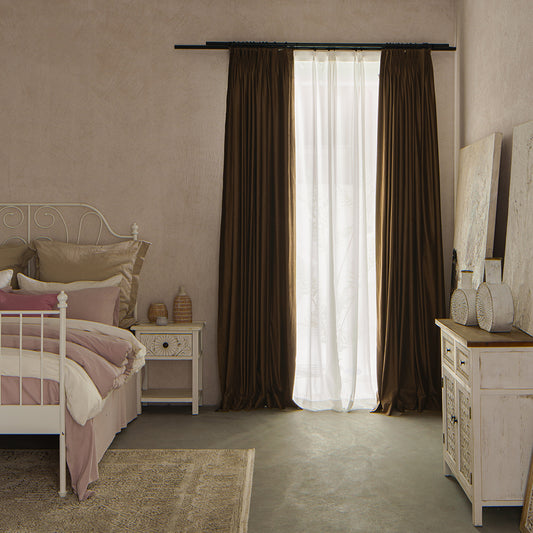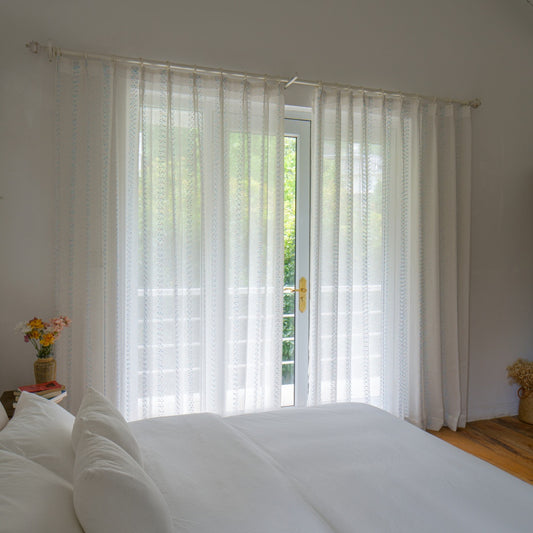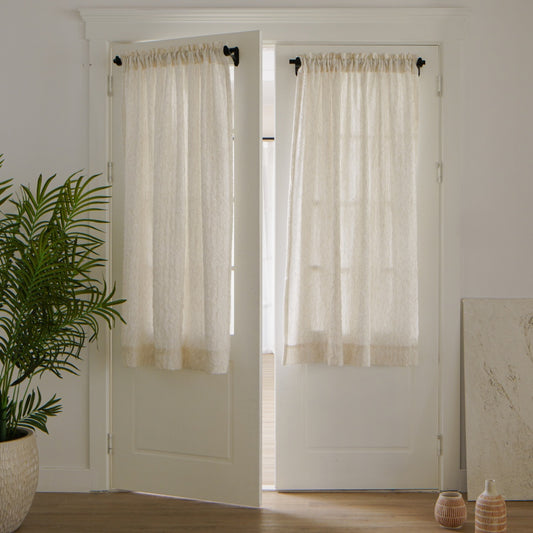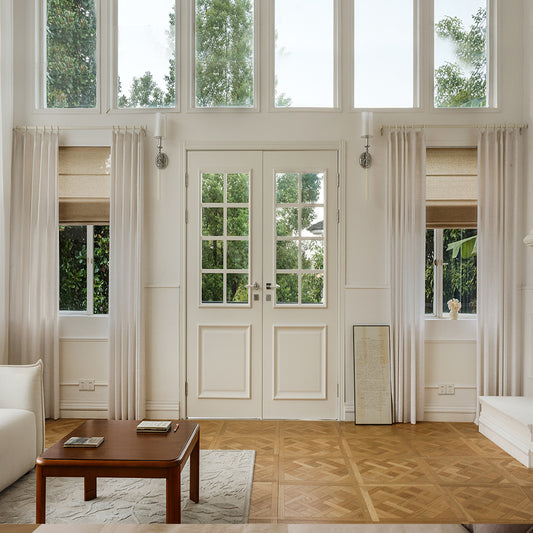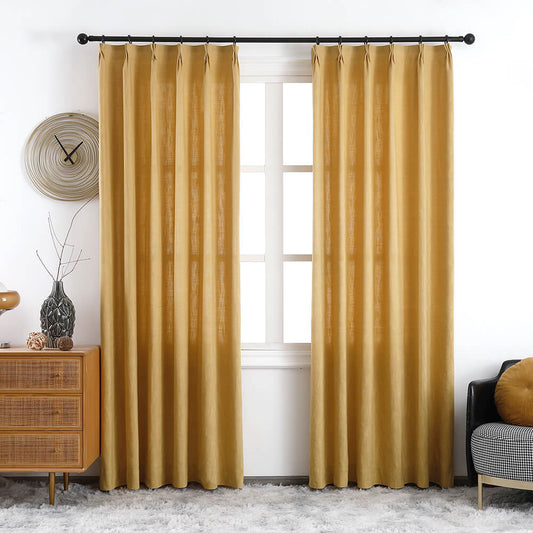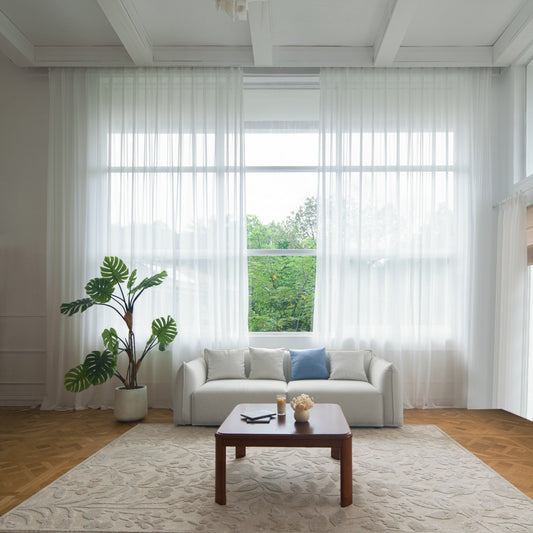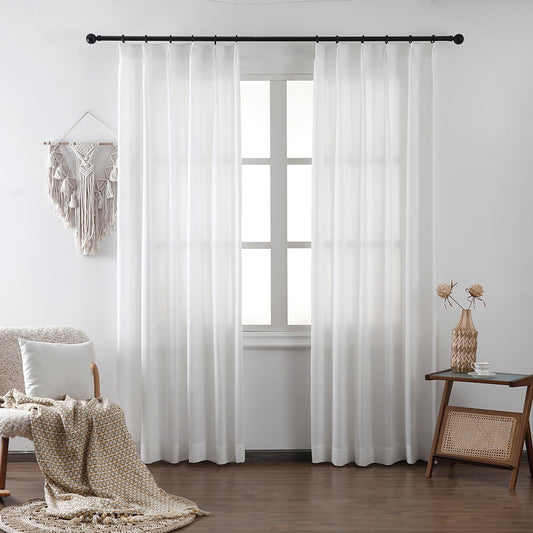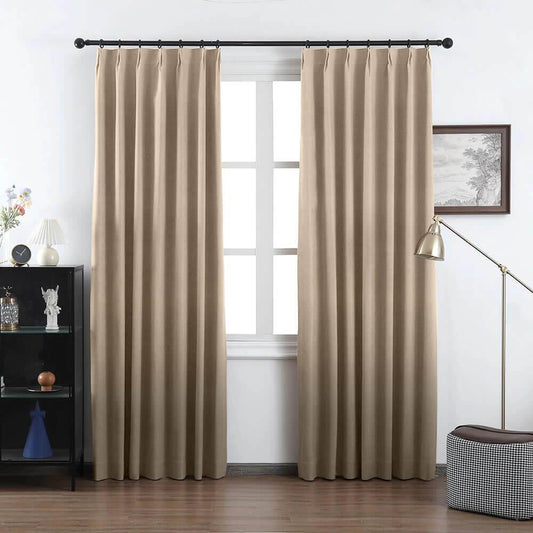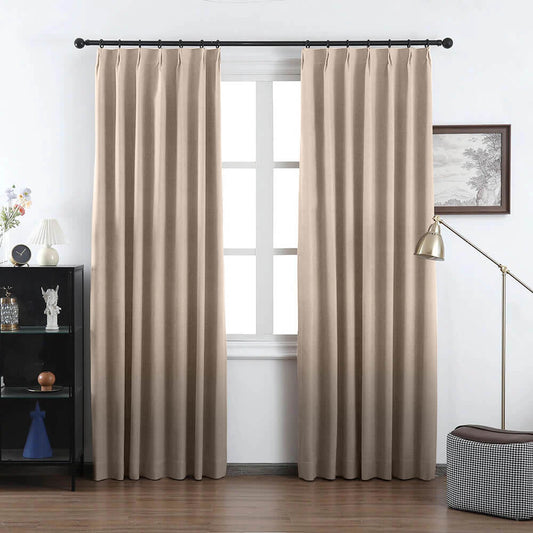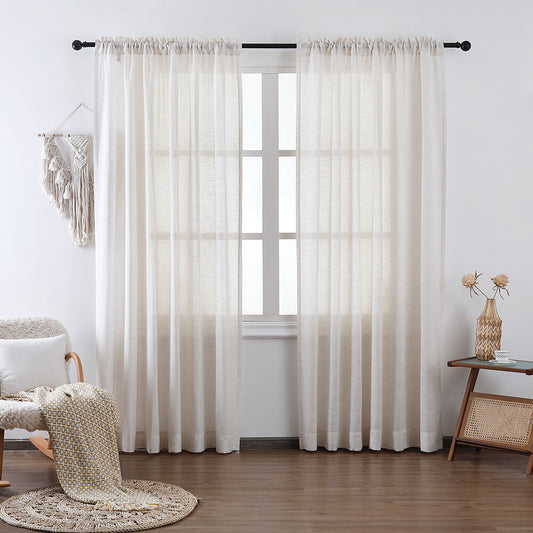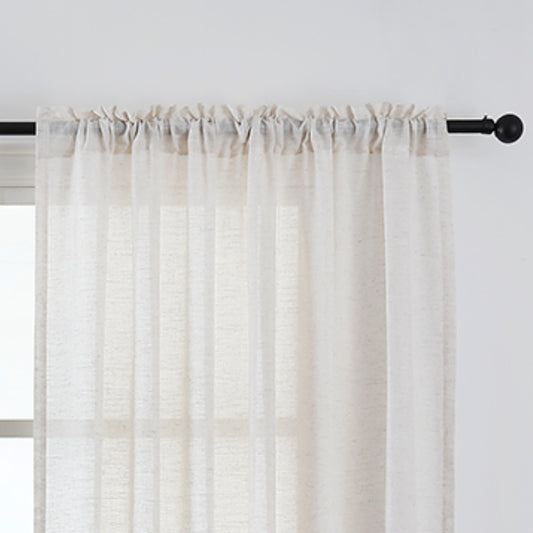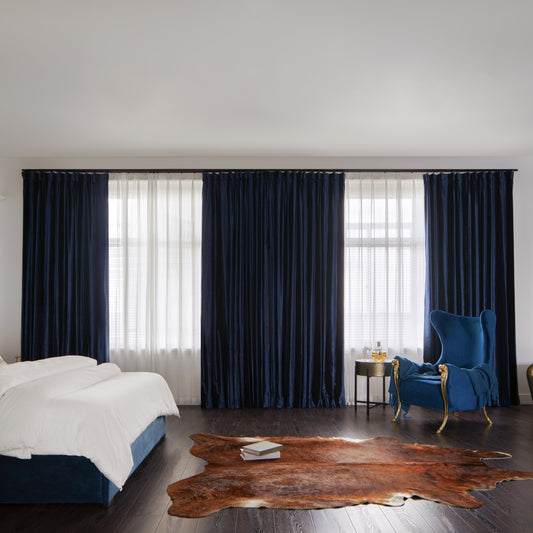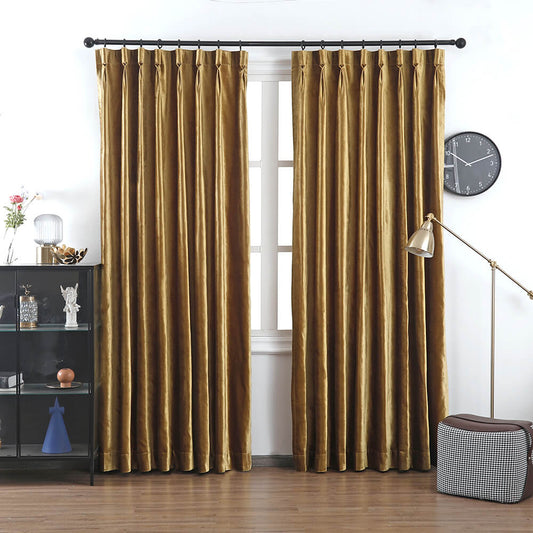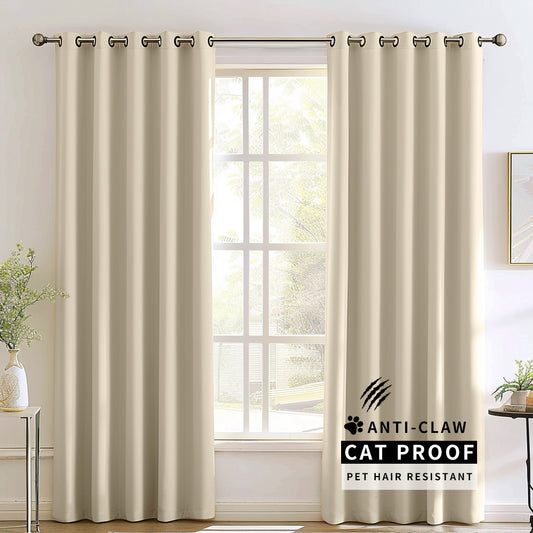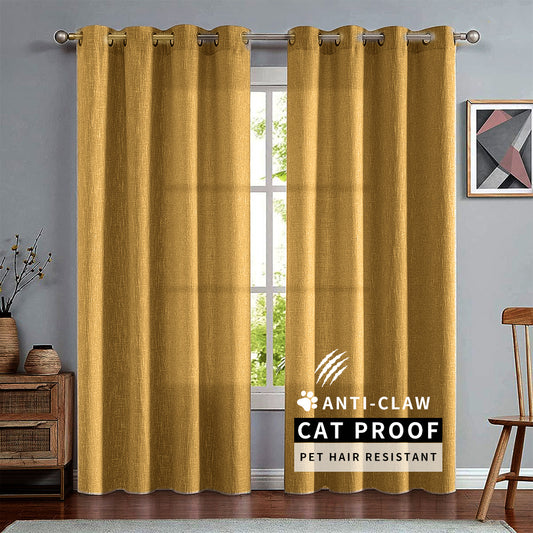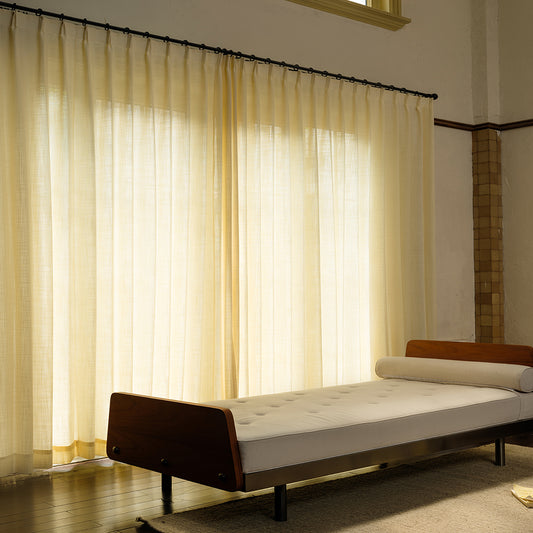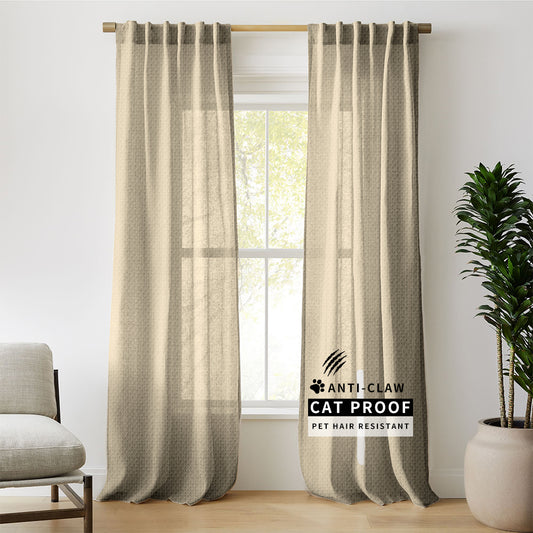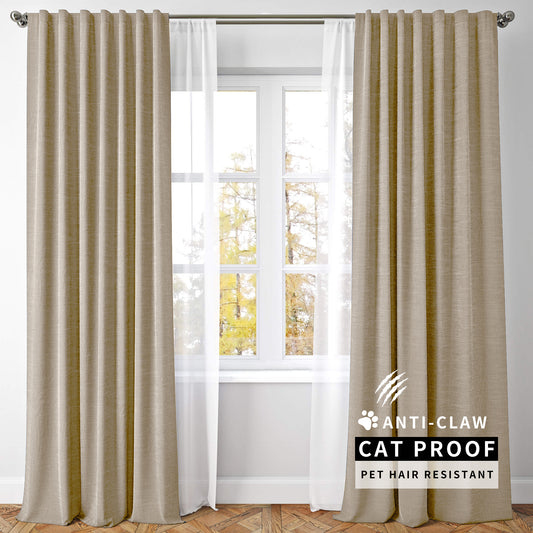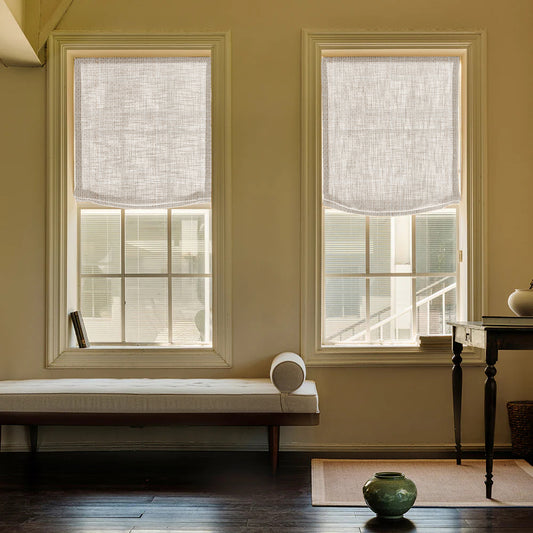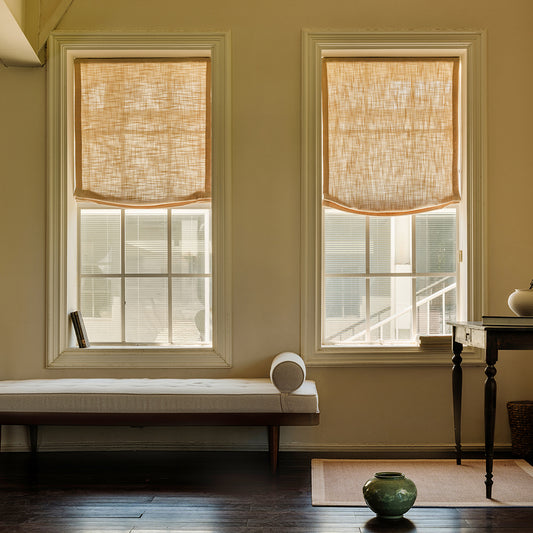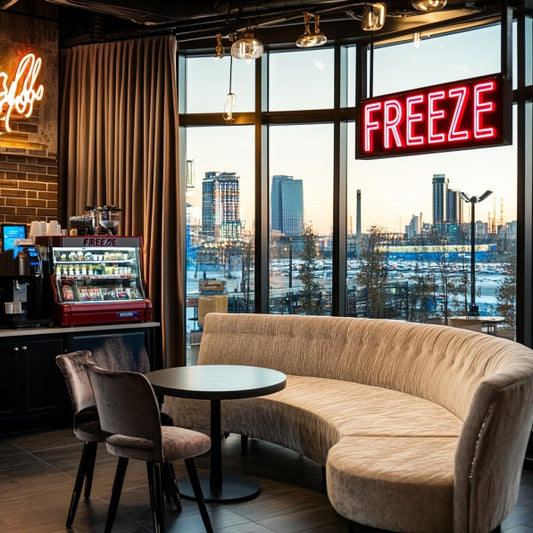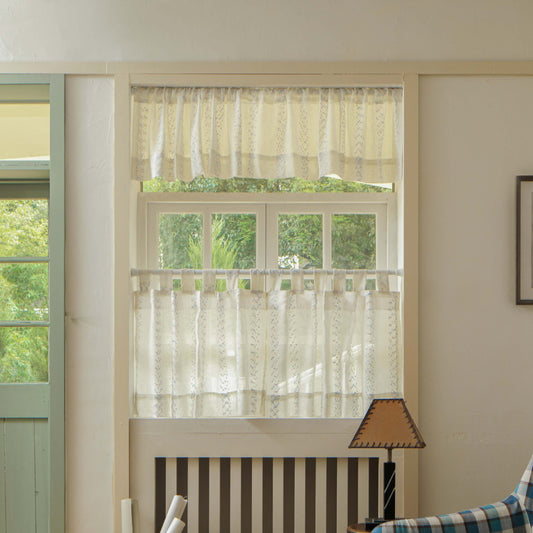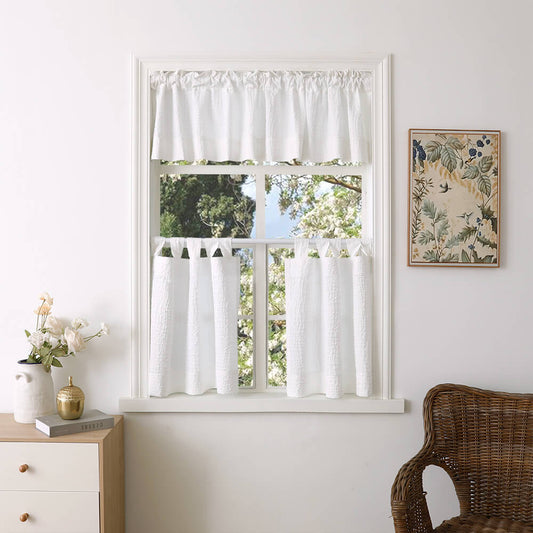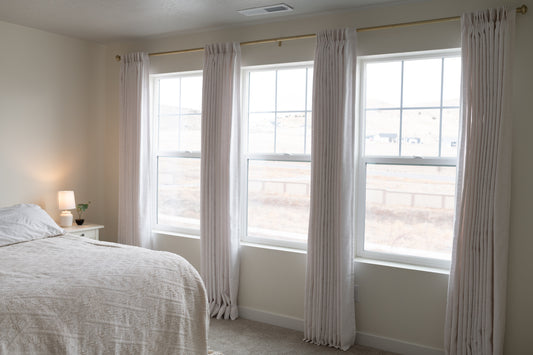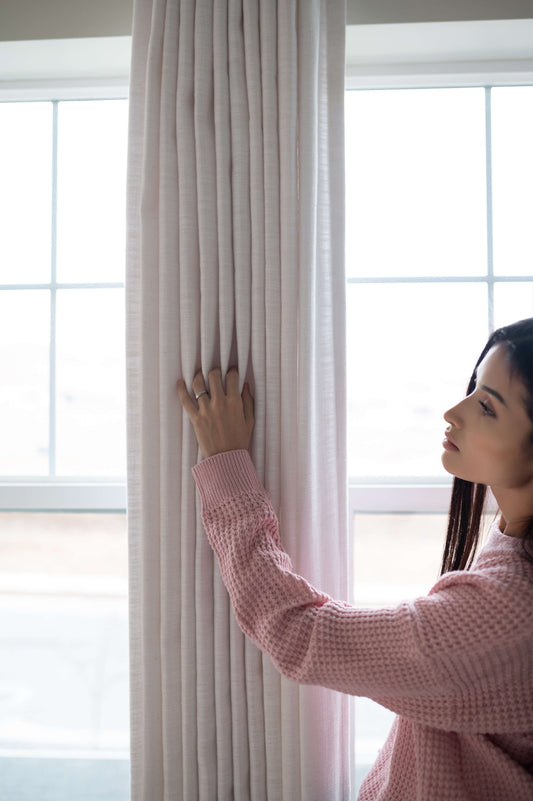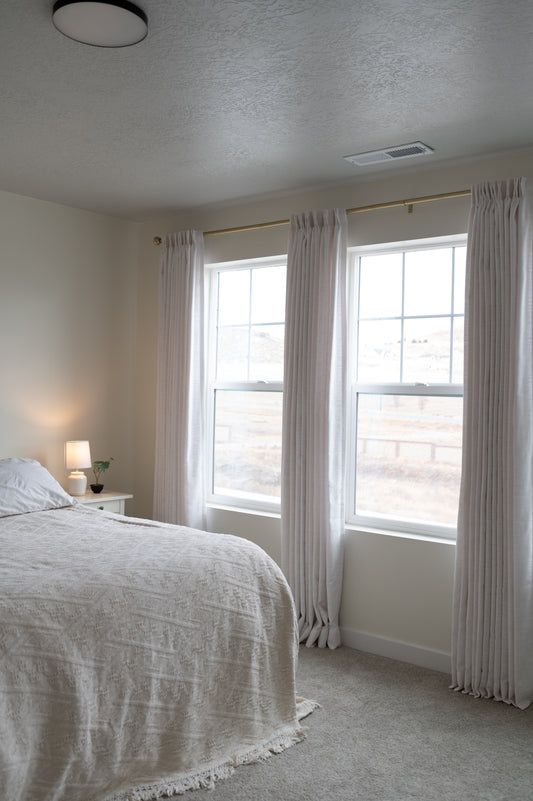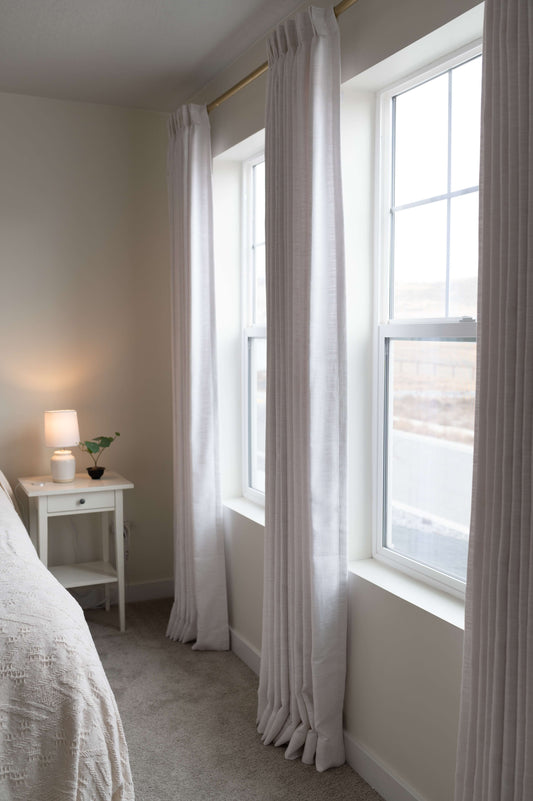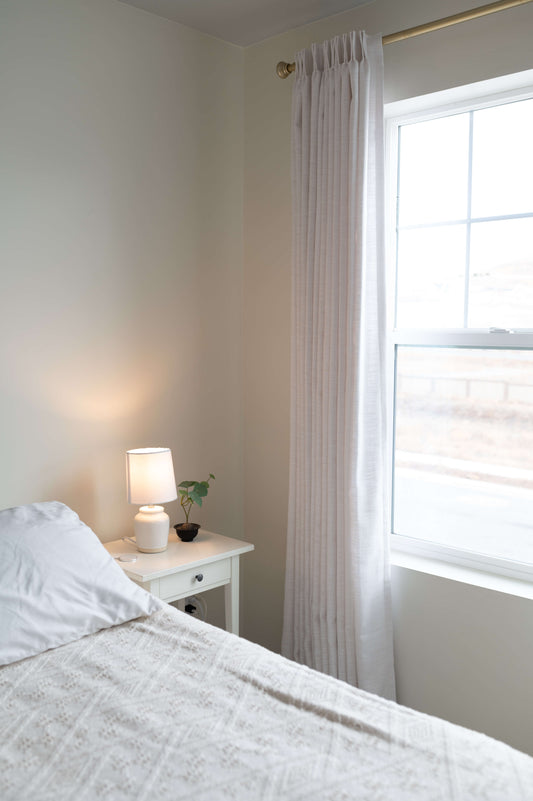Best Curtain Fabrics for High-Traffic Restaurants
Every design feature in the busy hotel scene of today has to serve two purposes: improving appearance while withstanding frequent use. From changing ambient needs to wear and tear and regular cleaning, restaurant owners deal with ongoing issues. Knowing the subtleties of curtain materials especially designed for high-traffic dining situations is absolutely essential for curtain dealers and distributors. This guide guarantees that restaurants not only wow their customers but also keep operational efficiency by looking at the best curtain fabric choices that mix durability, style, and safety. This article seeks to equip curtain professionals with the information required to drive questions and secure new business by providing perceptive analysis on materials, design trends, and maintenance techniques.

Curtain Fabric Principles for Restaurants
(probably 350 words)
The atmosphere of a restaurant is created on layers of detail, hence curtains are rather important in establishing that ambiance. Fundamentally, restaurant curtain fabric choices start with knowledge of the composition, weight, and weaving of the fabric. Materials that can resist repeated cleaning, continuous natural light, and the hustle of busy service hours are what restaurants need. Curtain materials must thus be strong, stain-resistant, and flexible enough to accentuate many home themes—from modern minimalism to rustic appeal.
Natural fibers, synthetic blends, and technologically designed textiles are the three main groups of curtain fabrics. Natural textiles like cotton and linen have gentle drape and organic appeal; nevertheless, in high-traffic environments they could need specific treatments to improve their endurance. Popular in commercial eating areas, synthetic fibers such as polyester or acrylic mixes shine in robustness and simplicity of use. Recent developments have also brought hybrid fabrics combining the strength and lifetime of synthetics with the tactile warmth of natural fibers.
Just as crucial are texture and weave. The light filtering and acoustic qualities of a fabric depend on its density and finish. For example, a tightly spun curtain improves seclusion without totally blocking ambient lighting, therefore reducing noise disturbance. Advanced weaving processes that provide for a balance between opacity and luminosity are being used by manufacturers to guarantee that restaurant interiors remain appealing across several times of the day.
Apart from their look, the functional functioning of curtain materials is absolutely crucial. High-traffic areas gain from materials that withstand fading, repel spills, and can be regularly cleaned without degrading. Selecting curtain textiles that fit both as a design statement and a durable investment for busy restaurants depends mostly on attention to these basics—material composition, weaving quality, and functional treatments.
Selecting Durable Curtains for High Traffic Areas
( about 350 words)

Durability is non-negotiable for restaurants experiencing constant foot traffic and fluctuating service times. When selecting curtain materials for heavy traffic areas, fabric robustness under frequent use and cleaning cycles takes front stage. Tensile strength and abrasion resistance should start the choosing process. For instance, high-quality synthetic textiles are designed to withstand everyday use and regular washing while nevertheless preserving their structural integrity and look.
Practically speaking, curtain materials for crowded dining rooms have to be assessed considering several important criteria. First of all, the capacity of the fabric to repel liquids and resist stains will help to greatly lower maintenance expenses. Particularly helpful in settings where spills are common, advanced textile treatments now provide water-repellent and stain-resistant coatings. Another important feature is fade resistance; restaurants depending on natural illumination must have curtains maintaining their vivid colors even under continuous sun exposure.
Still another crucial factor is the weight and texture of the fabric. Though it may necessitate more strong hardware and support systems, a heavier cloth could offer superior sound insulation and a sumptuous feel. On the other hand, lighter materials, when technologically improved, can have same durability and help with simpler operation and maintenance. Installations expecting regular adjustments and washes depend on this harmony between weight and resilience.
Furthermore, compliance with local safety rules depends on the inclusion of fire-retardant qualities into curtain textiles. High-traffic restaurants have to give materials that have undergone thorough fire safety testing top priority because of their size of operation. Dealers and distributors should make sure their curtain fabric choices not only satisfy all pertinent safety requirements but also shine in durability, therefore protecting staff members as well as guests.
Significant long-term savings can result from investing in materials that mix creative treatments with tested durability. Offering drapes that combine durability with use will set vendors apart in this cutthroat industry and draw queries from restaurant managers looking for both design and substance.
Original Curtain Weaves and Textures
( About three hundred words)
The design story of a restaurant depends much on the tactile attraction of curtain materials. Thanks to advances in textile production, curtain textiles today provide a great range of textures and weaves to meet both aesthetic and practical needs. Subtle textures and complex designs created by advanced weaving methods improve the visual depth of a dining room. These contemporary fabrics help with better light management and acoustic damping in addition to looking great.
Creative curtain textures are meant to interact dynamically with ambient lighting. For example, delicately crimped finishes or materials with a faint metallic shine can catch and reflect light in a way that lends warmth and refinement. Multi-layered weaves let designers change the tone of a restaurant all day by altering degrees of opacity. In high-traffic environments, where the visual surroundings must stay both exciting and flexible, this adaptability is priceless.
Manufacturers are also testing environmentally friendly material choices free of sacrifice on texture or durability. Often made from recycled materials, environmentally friendly fibers today provide more robustness and replicate the rich feel of classic fabrics. For companies dedicated to sustainable practices without compromising performance or flair, these developments provide a win-all solution.
Knowing these trends in texture and weave can help curtain dealers and distributors make more educated suggestions for restaurant customers. Providing fabrics that mix innovative design with useful features will help suppliers establish themselves as leaders in the market and satisfy changing needs of modern hotel design.
Safety Standards and Curtain Maintenance
(350 words or so)
The upkeep and safety of curtain materials are just as crucial in heavy traffic restaurant settings as their design and longevity. Dining rooms naturally require frequent cleaning, hence the selected curtain fabric must be able to resist thorough washing without sacrificing any structural or visual integrity. Choosing a fabric resistant to typical stains and easy to clean not only reduces downtime but also increases the lifetime of the installation.
Often pre-treated with stain-resistant and water-repellent treatments, modern curtain fabrics These treatments let restaurant employees keep a perfect look even during busiest times by making maintenance simpler. Following manufacturer recommendations for regular cleaning should help to guarantee that the protective properties of the fabric remain over time. This is especially crucial in crowded places where hygiene is of first concern.
Another really important consideration is safety. Public eating areas' curtain materials must all follow strict fire safety rules. Non-negotiable elements for any fabric meant for high-traffic restaurants are the use of fire-retardant chemicals and following international safety criteria. Distributors should be knowledgeable with the certifications and testing procedures ensuring the performance of a fabric under emergency conditions. For both regulatory authorities and restaurant managers, clear labeling and documentation of these safety features can give them piece of mind.
Moreover, the design of curtain systems should make cleaning and repairs simple access possible. Effective maintenance made possible by removable panels or modular designs lowers the risk of extended environmental contamination by means of which Providing a selection of fabrics that satisfy high maintenance and safety criteria will help dealers greatly increase market credibility and draw in business from discriminating consumers.
Curtain fabric providers may guarantee that their products provide not only in terms of visual attractiveness but also operational dependability by giving maintenance-friendly elements and strong safety criteria first priority. Establishing long-lasting alliances with restaurant operators that appreciate both beauty and functionality depends on this emphasis on lifespan and compliance.
Environmental and Financial Advantage of Superior Curtain Fabrics
(About 350 words)

High-traffic restaurant quality curtain textiles have advantages much beyond just appearance. Over long terms, a sustainable approach to fabric choice can result in major financial and environmental benefits. Made utilizing recycled fibers or less water-intensive techniques, eco-friendly curtain fabrics help to lower environmental impact. In a market where sustainability and corporate responsibility take front stage, these products are becoming more and more sought for.
Economically speaking, making investments in durable curtain materials might result in significant savings. High-performance materials that call for less regular replacement or repair help to reduce running costs and downtime. These fabrics' long-term dependability guarantees restaurants' ability to keep a high degree of presentation quality while under budget restriction. Distributors trying to present solutions with great return on investment will find this particularly tempting.
Still another economic advantage is energy efficiency. Superior insulating qualities of curtains assist control indoor temperature by limiting heat absorption or loss, so saving energy expenditures. Even little increases in insulation can have major financial savings over time in high-traffic restaurants where lighting and climate control systems run constantly.
Building confidence with possible customers depends on curtain experts explaining these environmental and financial advantages. Excellent curtain fabrics not only improve the dining experience but also support operational efficiency and sustainability by means of detailed case studies and data-driven insights. Dealers and distributors can present themselves as progressive hotel industry partners by matching their product offers with the expanding trend toward green building techniques.
Providing curtain textiles that promote both environmental responsibility and financial restraint is a great differentiation in a competitive market. High-traffic restaurants are not an exception; consumers are looking for goods that complement their more general environmental aspirations more and more. Emphasizing these twin advantages can encourage more questions from restaurant operators wishing to make long-term, sustainable design investments as well as deeper involvement.
Harmonizing Curtain Designs with Restaurant Interiors
( about 350 words)

The choice of curtain fabrics is not only a practical one but also a crucial component of interior design that could define the character of a restaurant. The dining experience can be improved by careful integration of curtain designs with general decor, therefore harmonizing practicality with style. One of the main competitive advantages for distributors and curtain dealers is their capacity to provide items that fit well with many interior themes.
Designers in planning for integration have to take architectural details of the space, color palettes, and textures into account. Many times, high-traffic restaurants have dynamic layouts with different degrees of lighting and activity. Curtain textiles that accentuate these components can be a visual anchor as well as a means of environmental control. A sleek industrial environment might benefit from a fabric with a subdued texture, for instance, whereas a more luxurious weave might provide warmth in a dining room.
Customizing is really important. Many eateries want custom solutions that capture their own brand character. Providing a selection of curtain fabrics ranging from modest, traditional weaves to strong, statement textures lets distributors satisfy the different needs of their customers. Furthermore improving the use and visual attractiveness of the area are layered designs and customizable opacity options.
Often reaching the ideal balance requires cooperation with interior designers. Close collaboration with design experts helps curtain suppliers to make sure their product recommendations complement the general concept for the area. Along with raising client happiness, this cooperative strategy helps to build long-term commercial ties.
Integrating curtain designs with restaurant interiors is ultimately about crafting a coherent story that appeals to patrons. For distributors, the capacity to offer creative and flexible curtain solutions can inspire trust in potential customers, therefore generating more questions and a more visible market.
Trends in Restaurant Curtain Fabrics and Solutions Going Forward
(about 450 words)
Looking ahead, changing consumer expectations and technological innovation will help to design curtain materials for high-traffic restaurants. Curtain fabrics are seeing major developments that will redefine utility and design as the hotel sector keeps embracing digital transformation and sustainability.
Smart textile technology is one new trend showing up in curtain materials. Through control of light transmission and temperature, these sophisticated materials may change with the times. Imagine drapes that, depending on internal climatic data or ambient light levels, automatically change their opacity or insulating quality. Such developments not only improve visitor comfort but also help to improve energy efficiency—a crucial consideration for busy restaurants trying to cut running expenses.
Still of great importance is sustainability. Low-impact production techniques and biodegradable fibers are projected to be features of future curtain fabrics. Research is being done by manufacturers to create fabrics with the same degree of durability and visual appeal while lowering environmental damage. Growing customer demand for environmentally friendly solutions and increasing legislative demands push this change toward greener materials. Distributors who provide sustainable curtain choices will probably have a competitive advantage on the market.
Advanced surface treatments that improve fabric performance even more are another development just waiting for us. These treatments could include nano-coatings with antibacterial qualities, stain resistance, and even liquid repellent properties—qualities especially important in crowded restaurants. Such developments will transform maintenance practices and guarantee that curtain materials remain immaculate even with regular use.
One of the main drivers going forward will be customizing. The capacity to create custom curtain fabrics that satisfy exact design criteria is fast growing as digital printing and laser cutting technologies become more widely available. This degree of adaptation not only promotes artistic expression but also helps restaurants to accentuate their own character by means of every architectural detail.
Moreover, user comments and data analytics are starting to be more important factors influencing product development. Real-time data is being used by manufacturers to improve fabric formulas and design elements directly addressing the difficulties in high-traffic environments. Maintaining current with these trends helps curtain distributors to provide innovative goods that meet consumer demand and inspire market need.
Looking ahead, the combination of sustainability, technology, and customizing is likely to define new benchmarks in the realm of restaurant curtain materials. Forward-looking vendors who adopt these ideas will not only satisfy changing needs of the hotel sector but also open fresh paths for development and research. Keeping an eye on these new trends helps curtain designers to maintain producing goods as creative as they are durable.
At last
Ultimately, choosing the appropriate curtain textiles for busy restaurants calls for a judicious mix of design, durability, and maintenance simplicity. From basic knowledge to future trends, this guide has listed important elements that curtain dealers and distributors should take into account while suggesting items to restaurant operators. Investing in premium materials that satisfy both aesthetic and practical needs helps providers create solutions that improve the eating experience and give long-term value. Adopting sustainability and creativity can help your company to be a reliable friend in the hotel sector, hence promoting more questions and long-lasting success.
Common Questions
Q1: Why would a high-traffic restaurant choose a curtain fabric?
Perfect curtain materials for busy restaurants combine compliance with safety standards, stain resistance, and durability with simplicity of washing. They are made to look great and survive regular use and strong cleaning chemicals.
Q2: In what ways could advanced treatments enhance curtain fabric performance?
By fighting spills, stains, and microbiological growth, modern treatments including water-repellent and nano-coatings extend fabric lifetime. These characteristics guarantee the curtains remain vivid and safe for public usage and help to lower maintenance efforts.
Q3: Why should one choose curtain fabric depending on sustainability?
A3: Through environmentally friendly materials and production techniques, sustainable curtain fabrics lessen influence on the surroundings. For high-traffic businesses, they are also appealing since they reduce replacement frequency, therefore reducing long-term costs.
